(42 products available)




















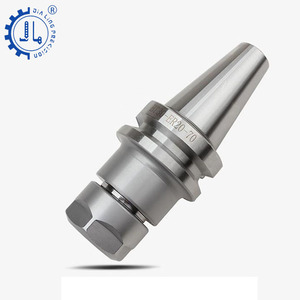
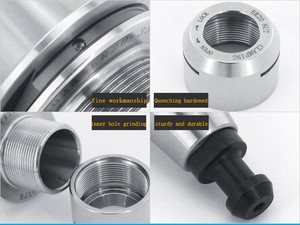







































































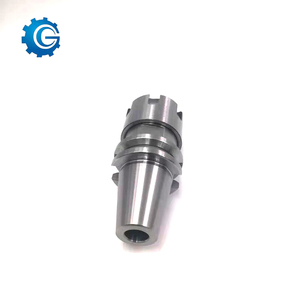

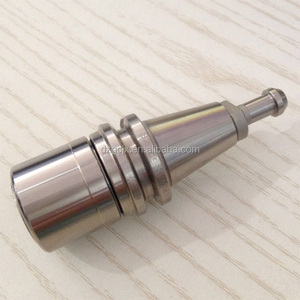


















































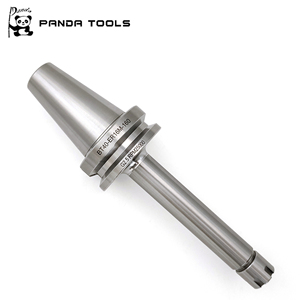
































































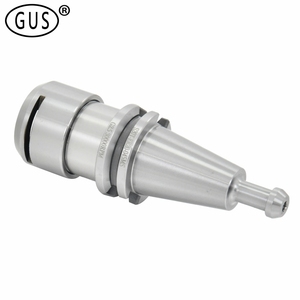

























BT20 tool holders are angular cylindrical elements used to grip tools firmly and attach them to the spindle of a machine.
BT20 Sleeved Tool Holder
This tool holder type has a sleeve encasing it. The sleeve has varied diameters, which assists in accommodating tools of distinct sizes. The main advantage of the BT20 sleeved tool holder is flexibility. Users can use it for many tool sizes, enhancing usefulness in diverse machining tasks.
BT20 Shrink Fit Tool Holder
It employs a shrink fit technology to grip the tool. The method entails heating the holder, thus expanding its diameter. As it cools, it contracts around the tool, creating an extremely tight fit. This offers better balance and grip as the machining operations take place. Also, it minimizes vibration.
BT20 Tool Holder with Arbor
The arbor has a straight gear component attached to the spindle of a machine. It is mainly used in machining operations that need larger, heavier tools such as saws and drills. Different retraction ratios are offered for adapting to varied machining applications and tool sizes.
Sizes
The BT20 tool holder usually has a total length of around 80 mm to 120 mm, with a flange diameter of 130 mm to 160 mm.
Weight
On average, a BT20 holder weighs between 0.5 and 2 kg, like other BT holders of the same size and capacity. A BT20 holder is lighter than a holder of similar specifications in the BT larger series, such as BT30, and heavier than a BT12 holder.
Materials
BT20 holders are made of various materials, such as durable steel, carbon steel, alloy steel, stainless steel, aluminum, titanium, etc. The stainless steel BT20 tool holder is more corrosion-resistant, while carbon steel titanium ones are lighter.
Compatibility
The BT20 tool holder is compatible with machine tools with a spindle that holds BT20 tool holders. For example, it can be used on CNC lathes with a specific spindle designed to hold BT tool holders.
Cleaning:
It is very important to always keep the tool holders clean. Wipe the tool holder with a clean cloth after use to remove oil, dirt, and cutting fluid. Pay special attention to cleaning the taper and keyway parts. The clamping mechanism should be cleaned of chips and other contaminants. Use air to blow off any residual debris. Try to use a separate clean space and tools for cleaning to avoid cross-contamination.
Lubrication:
For the good working condition and long life of BT20 tool holders, it is necessary to apply proper lubrication to lubricate the tool holder and machine spindle regularly, which can reduce friction and prevent wear. BT20 tool holder grease is widely used, which ensures its smooth operation and long service life. Regularly adding lubricant to the clamping mechanism can ensure its smooth operation and reliable clamping force.
Inspection:
It is necessary to check the tool holders regularly. First, check whether the appearance of the tool holder is deformed or damaged, and replace it in time if there is any. Check whether the taper surface and clamping force of the tool holder are worn and repaired. In addition, pay attention to checking whether the lubrication and sealing parts of the clamping mechanism are in good condition, ensuring its normal operation and clamping force reliability.
Below is a list of some common BT20 tool holder usage scenarios.
Machining industry
These tools are primarily used in the machining industry. They are ideal for holding cutting and machining tools like drills, reamers, and milling cutters. With their ability to provide stability and precision, BT20 tool holders ensure quality cutting and increase machining efficiency.
Metal processing workshops
BT20 tool holders are frequently used in metal processing workshops. They are compatible with CNC milling machines and machining centers. When used with these machines, they are reliable for holding various machining tools.
Automobile manufacturing
The automobile manufacturing industry is constantly in search of industry-standard machines and tools to make its processes smoother. BT20 tool holders are suitable for the precise machining and processing of parts in the automobile manufacturing industry. They guarantee the stability and precision of the machining of complicated automobile parts. This contributes to a smooth automotive assembly process.
Aerospace industry
The aerospace industry requires the use of materials and technology with the highest standards. This is to guarantee the stability and safety of aircraft. Tool holders like the BT20 are suitable for the precise machining of components of various aerospace equipment such as satellite, spaceship, and aircraft parts.
Electronics industry
The electronics industry makes use of micro-mechanical parts with precision. BT20 tool holders assist in the precise machining of fine mechanical parts in this industry. It also allows operators to achieve high-precision processing. This enhances quality assembly to ensure proper functioning.
Mold manufacturing
Mold manufacturing relies on complexity and precision. BT20 tool holders allow the precise machining of various molds, including injection molds and stamping molds. This guarantees the stability and precision required by the mold manufacturing industry.
Woodworking industry
The woodworking industry utilizes CNC machines for woodworking. BT20 tool holders are compatible with these CNC machines. They facilitate precise machining and carving of various wooden components.
Choosing the suitable tool holder requires careful consideration of various factors. First of all, considering the compatibility of machine tool holders is crucial. This ensures that they will properly fit in the spindle of the BT20 milling machine, PT20 tool holders, or any other machine being used. It will avoid vibration and run-out, which can negatively impact the quality of the work.
Secondly, focus on the construction material of the tool holder. Tool holders with high-quality steel construction, such as alloy steel and carbon steel, are known for their durability, stability, and resistance. Additionally, consider the machining accuracy of the tool holder. Higher precision tool holders are compatible with high-accuracy mating surfaces. They are able to minimize clearance and provide a tight fit. This results in excellent performance.
Moreover, the tool holder's design and type offer a variety of options, such as BT20 disc-type tool holders. Each is suitable for different work requirements. Some may prioritize the holder's gripping ability. Others will consider its rigidity, damping ability, and heat generation when performing the work. In addition, selecting a tool holder with a larger contact area can provide better performance.
For end mills and cutting tools, consider those with a high run-out accuracy. Those will allow higher speeds and reduce the erosion of the tool. Another important aspect is the tool holder's retention knob. To achieve a good, smooth surface finish for workpieces, buyers should consider tool holders with good retention and accentuation.
Furthermore, buyers should consider the maintenance of tool holders. Those that require less maintenance and are economically available will be more preferable.
Q1: Are all BT tool holders the same?
A1: No, the BT tool holders are different. For instance, the BT30 tool holder has an asset that differs from the BT40 tool holder.
Q2: What does BT mean in tool holders?
A2: BT refers to the Japanese-Bayonet Type. It is an economical and effective way of connecting the tool holder and spindle.
Q3: What is the difference between BT and ISO?
A3: The main difference between BT and ISO is that the BT tapers are more elongated than the blunt tapers of the ISO. This makes them offer a greater gripping force and provide more stability when using large cutting tools.